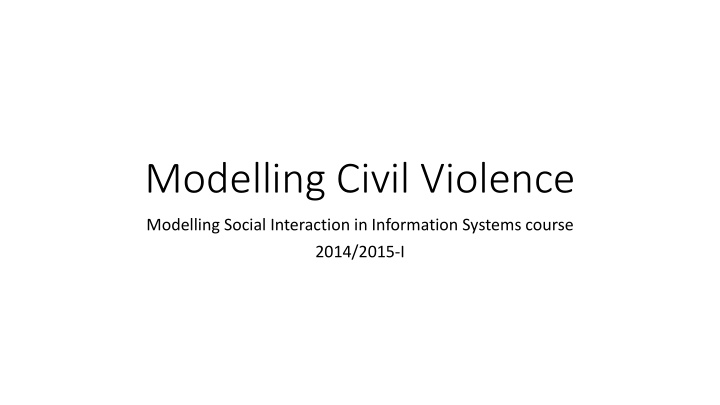



Modelling Civil Violence Modelling Social Interaction in Information Systems course 2014/2015-I
Paper: ”Modeling civil violence: An agent - based computational approach” • Author: Joshua M. Epstien • 2 agent-based models • Model I: agents rebel against central authority which seeks to suppress rebellions • Model II: central authority seeks to prevent violence between agents of two ethnic groups
Rebellion against central authority • Agents • Properties: H ardship, L egitimacy, R isk aversion, v ision, Cops/Actives ratio • States: active, quiet • G rievance – N et risk >Threshold → active; otherwise quiet • Cops • v* ision • Rule: arrest perceived active agents • Random movement and jail time
Results of Model I • ”Free Assembly Catalyzes Rebellious Outbursts” • ”Individual Deceptive Behavior” • ”Salami Tactics of Corruption” • ”Cop Reductions”
Violence between two ethnic groups • Variant of Model I • Going active means killing agents of the other group • Random death age • Offspring with probability p • Cops arrest active agents from both groups evenhandedly
Results of Model II • ” Peaceful Coexistence ” • ” Ethnic Cleansing ” • ” Safe Havens ” • ” Cop Density and Extinction Times ”
Recommend
More recommend